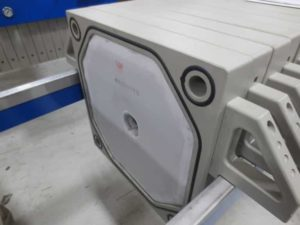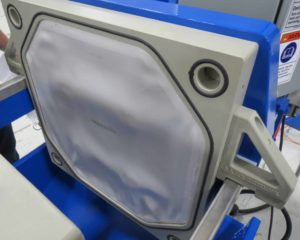Frequently Asked Questions about Filter Press Cloths
2024-08-28
1. How to Choose the Right Filter Cloth
Selecting the correct filter cloth is crucial for achieving optimal filtration results. Filter press cloths come in various shapes, sizes, and materials, each affecting filtration performance. Factors such as the raw materials, fiber type, weave, and finishing process all play a role. To choose the best filter cloth for your specific needs, it's essential to consider the design requirements and process applications.
2. When Should I Change the Filter Cloth?
You'll know it's time to replace your filter cloth when your filter press fails to form a solid filter cake, or if the pressure remains low despite cleaning. Over time, particles can embed deeply in the fabric, making it difficult to clean effectively. Additionally, if you notice impurities in the output or poor agglomeration, it could mean that the fabric has become too porous due to stretching or twisting. Regular replacement is necessary to maintain the efficiency of your filter press.
3. How Long Does a Filter Cloth Last?
The lifespan of a filter press cloth depends on various factors, including exposure to chemicals, mechanical wear, abrasion, and clogging. Regular cleaning and maintenance are vital for extending the life of your filter cloth. Implementing preventive measures can also help your filter press operate at its best for longer periods.
4. What Are Head Cloths, Mid Cloths, and Tail Cloths?
Head Cloths: These are typically single pieces of filter cloth with a center hole, attached to the head filter plate. Variations include cover cloths and cartridge neck cloths. Gasket head cloths are also available for enhanced sealing. Learn more in our **Head Cloth Installation Guide.

Mid Cloths: Making up the bulk of the filter cloths in a filter press, mid cloths are attached to the middle filter plate between the head and tail plates. These cloths help form the filter cake by trapping particles on their surface.

Tail Cloths: The last cloth in the plate stack, tail cloths are single pieces without holes, attached to the tail filter plate. This design often features a cover cloth configuration.

5. What Is Cloth Cover?
Cloth cover refers to the condition where the porosity of the filter cloth is blocked, preventing the filtrate from flowing through effectively. This indicates that the cloth may need cleaning or replacement.
6. CGR vs. NG Filter Plates: What's the Difference?
CGR Plates: CGR stands for "Caulked, Gasketed, Recessed chamber." These plates are designed to create a nearly leak-proof filter press, with octagonal filter cloths that include a caulking rope or wire sewn around the edges.
NG Plates: NG means "No Gasket." These filter cloths are quicker and simpler to install, though they may occasionally cause drips due to the lack of a gasket seal.
7. How to Install Filter Cloths
Installing filter cloths depends on the type of filter plates you have. There are two main types: CGR (caulking, gasketed, recessed) and NG (no gasket). Each type requires a specific installation method to ensure optimal performance and durability.



